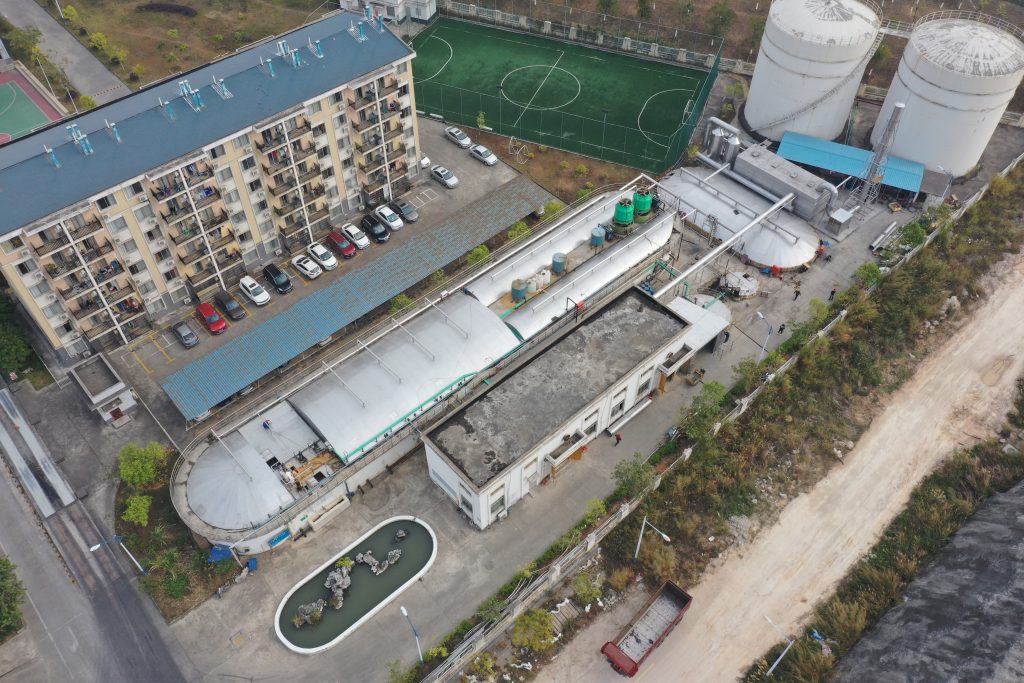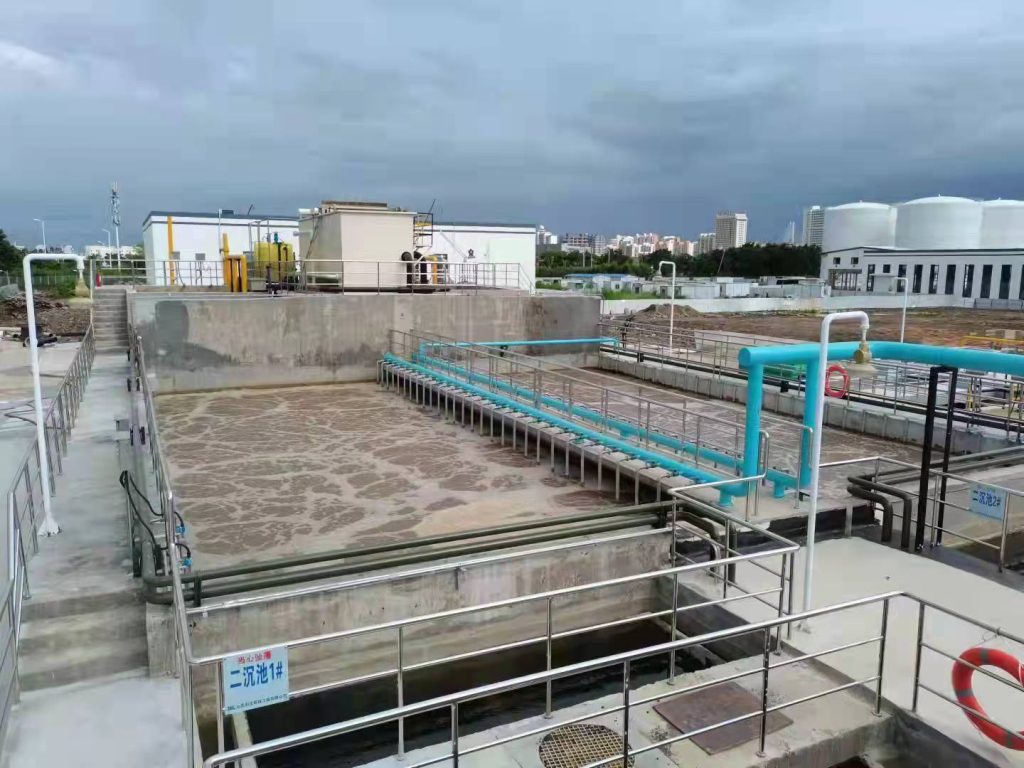The common methods for rapid cultivation of activated sludge!
When a sewage treatment facility is put into formal use, its biochemical treatment equipment needs to be inoculated and acclimatized (commonly known as commissioning). For larger-scale sewage treatment facilities, it is important to shorten the commissioning time as much as possible, so that the treatment process can be put into normal operation as soon as possible, which is of great significance in actual operation. This article analyzes how to cultivate activated sludge quickly in two categories: aerobic stage activated sludge and anaerobic stage activated sludge.
一、Cultivation of aerobic activated sludge
There are two main methods for cultivating conventional aerobic activated sludge: natural cultivation and inoculation cultivation.
1.Natural cultivation
This method utilizes a small amount of microorganisms present in the wastewater and gradually allows them to propagate. This method is suitable for conditions where the wastewater concentration and organic matter concentration are high, and the climate is relatively mild. If necessary, a small amount of sediment from rivers or septic tanks can be added in the initial stages of cultivation.

There are several specific methods for natural cultivation:
(1) Intermittent cultivation
Wastewater is introduced into the aeration tank, and then the inflow is suspended, and anaerobic aeration (aeration without inflow) is started. After 2-3 days of anaerobic aeration, aeration is stopped, and sedimentation is allowed to occur for 1-1.5 hours. Then, a portion of fresh wastewater is introduced (the amount of water is about 1/5 of the tank capacity). Afterwards, the process of anaerobic aeration, sedimentation, and inflow is repeated in cycles, but each time the inflow is increased compared to the previous cycle, and the duration of anaerobic aeration is shortened.
When the wastewater temperature is 15-20℃, after about 15 days, the sludge concentration in the aeration tank can exceed 1g/L, and the sludge sedimentation ratio of the mixed liquor can reach 15%-20%. At this point, anaerobic aeration can be stopped, and continuous inflow and aeration can be started, as well as sludge reflux. Initially, the reflux ratio should be smaller, controlled at about 25%, and gradually increased to the design value as the sludge concentration increases.
(2) Continuous cultivation
Wastewater is directly introduced into the aeration tank and the secondary sedimentation tank of the activated sludge system, with continuous inflow and outflow. The excess sludge is not discharged from the secondary sedimentation tank but is all returned to the aeration tank until the sludge concentration of the mixed liquor reaches the design value.
There are two specific methods:
Low-load continuous cultivation: After the aeration tank is filled with wastewater, the inflow is stopped, and anaerobic aeration is carried out for 1-2 days. Then, continuous inflow and aeration are carried out (the inflow rate is controlled at 1/2 or lower than the design flow rate), without discharging or refluxing the sludge. When flocs form in the aeration tank and there is sludge precipitation in the secondary sedimentation tank, sludge reflux is started with a low reflux ratio (about 25%). When the sludge concentration of the mixed liquor exceeds 1g/L, the sludge reflux is carried out according to the design reflux ratio. When the sludge concentration of the mixed liquor approaches the design value, the excess sludge can be discharged according to the specific situation.
High-load continuous cultivation: After the aeration tank is filled with wastewater, the inflow is stopped, and anaerobic aeration is carried out for 1-2 days. Then, continuous inflow and aeration are carried out according to the design flow rate. When flocs form in the aeration tank and there is sludge precipitation in the secondary sedimentation tank, sludge reflux is started with a low reflux ratio (about 25%). When the sludge concentration of the mixed liquor approaches the design value, the excess sludge can be discharged according to the specific situation.

2.Inoculation cultivation
Fill the aeration tank with sewage, and then add a large amount of inoculated sludge (preferably fresh dehydrated residue sludge from nearby sewage plants that has not been digested, or bottom sludge from septic tanks or river channels). Cultivate using the high-load continuous cultivation method, which can greatly shorten the cultivation time.
This method is generally only suitable for small-scale sewage treatment plants. Large-scale treatment plants require a very large amount of inoculation, and transporting a large amount of sludge is often not practical. When the sewage plant is rebuilt or expanded, it is common practice to use old aeration tank sludge to provide inoculated sludge for the new aeration tank. This can also shorten the cultivation time and reduce the energy consumption of the entire plant.
3.Notes:
(1) In winter, the temperature of sewage is low, which is not suitable for the growth of microorganisms. It is advisable to avoid cultivating sludge in winter as much as possible (cultivation time will increase by 30% – 50%). If it is necessary, inoculation culture method should be adopted, and a lower operating load should be controlled.
(2) When the organic matter concentration of sewage is low, in order to shorten the cultivation time, organic nutrient matter can be added to the influent, such as a certain amount of mouse feces can be added to small sewage treatment plants, and sewage can be directly introduced into the aeration tank beyond the primary sedimentation tank in large sewage treatment plants.
(3) During the initial stage of sludge cultivation, the aeration volume must not be too large, generally controlled at about 1/2 of the normal design value. Otherwise, floc-like sludge is not easy to form.
(4) During the sludge cultivation process, not only the SV and MLSS of the aeration tank mixed liquid should be measured, but also the biological phase of the sludge should be observed at any time to understand the growth of bacterial aggregates and indicative microorganisms, so as to make necessary adjustments to the cultivation process according to the situation.
(5) For industrial wastewater or urban sewage mainly composed of industrial wastewater, due to the lack of specific bacterial species and sufficient nutrients, the cultivated sludge should be tamed at the time of production, so that the microorganism population of the activated sludge gradually forms an enzyme system with specific metabolism for industrial wastewater, having a certain degree of specificity.

二、Anaerobic Activated Sludge Cultivation
The main goal of anaerobic activated sludge cultivation is to cultivate bacteria required for the three stages of anaerobic digestion, including methane bacteria, acid-producing bacteria, and hydrolytic acidification bacteria. The cultivation methods mainly include inoculation cultivation and gradual cultivation.
1. Inoculation cultivation:
The second-stage effluent is introduced into the anaerobic digestion device, which is then filled with 10% to 30% of anaerobic bacterial sludge (generally wet sludge with a solids content of 3% to 5%). Fresh sludge is then added to the design liquid level and thoroughly mixed. Steam is then introduced, and the temperature is increased at a rate of 1℃/h until the digestion temperature is reached and maintained for 3-5 days. The sludge is then mature and ready for use. Fresh sludge is added, and the system is put into operation. This method is suitable for small digestion tanks because a large amount of heat is required to achieve a temperature increase rate of 1℃/h for large digestion tanks, which cannot be supplied by the boiler.
2. Gradual cultivation:
The anaerobic sludge is gradually introduced into the anaerobic digestion tank to transform the raw sludge into anaerobic activated sludge. This method requires the activated sludge to undergo a transformation process from aerobic to anaerobic. Since the growth rate of anaerobic microorganisms is much slower than that of aerobic microorganisms, the cultivation process is slow, generally taking about 6 to 10 months. Therefore, gradual cultivation is not recommended for anaerobic start-up.
3. Precautions:
(1) In areas where sources of digestion sludge are scarce, organic waste such as human feces, cow manure, pig manure, distiller’s grains, and residual starch can be diluted to a solids content of 1% to 3% and introduced into the nitrification tank.
(2) The initial amount of raw sludge added is related to the number of inoculated sludge and cultivation time. In the early stage, 30% to 50% of the design sludge amount can be added, and the amount can be gradually increased after 60 days of cultivation. If abnormal digestion is detected from monitoring results, the amount of sludge added should be reduced.
(3) To prevent biogas explosions, inactive gas (nitrogen) should be used to replace the air in the gas delivery system before sludge is added. After biogas is generated, the nitrogen can be gradually replaced with air.
(4) When cultivating digestion sludge bacteria, the pH value and organic load should be controlled. The pH value should be maintained between 6.4 and 7.8, and the organic load should be controlled below 0.5 kgVSS/(m3·d). An excessively high organic load can cause a large accumulation of volatile fatty acids, lowering the pH value and prolonging the acid depletion phase, thereby extending the cultivation time.
